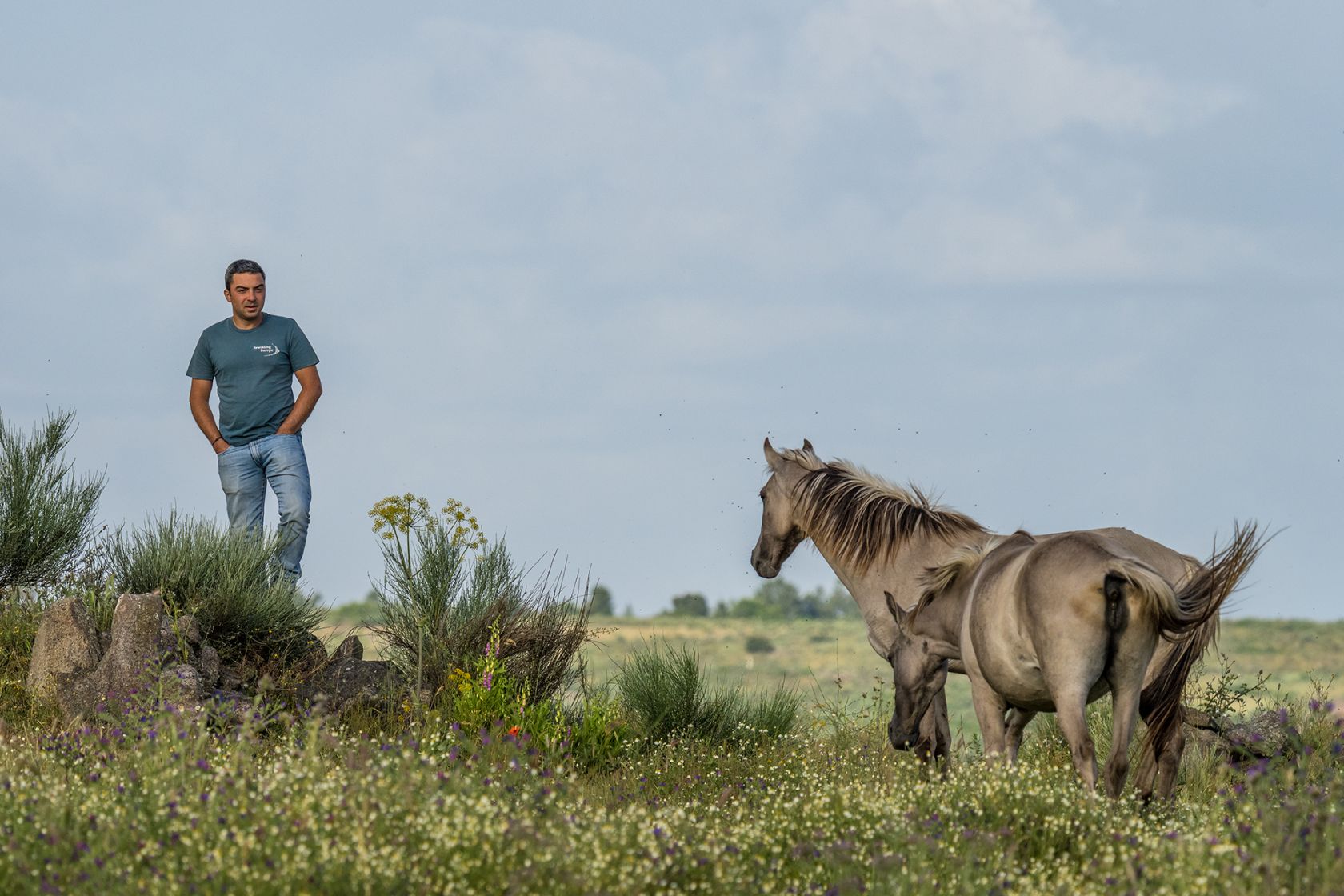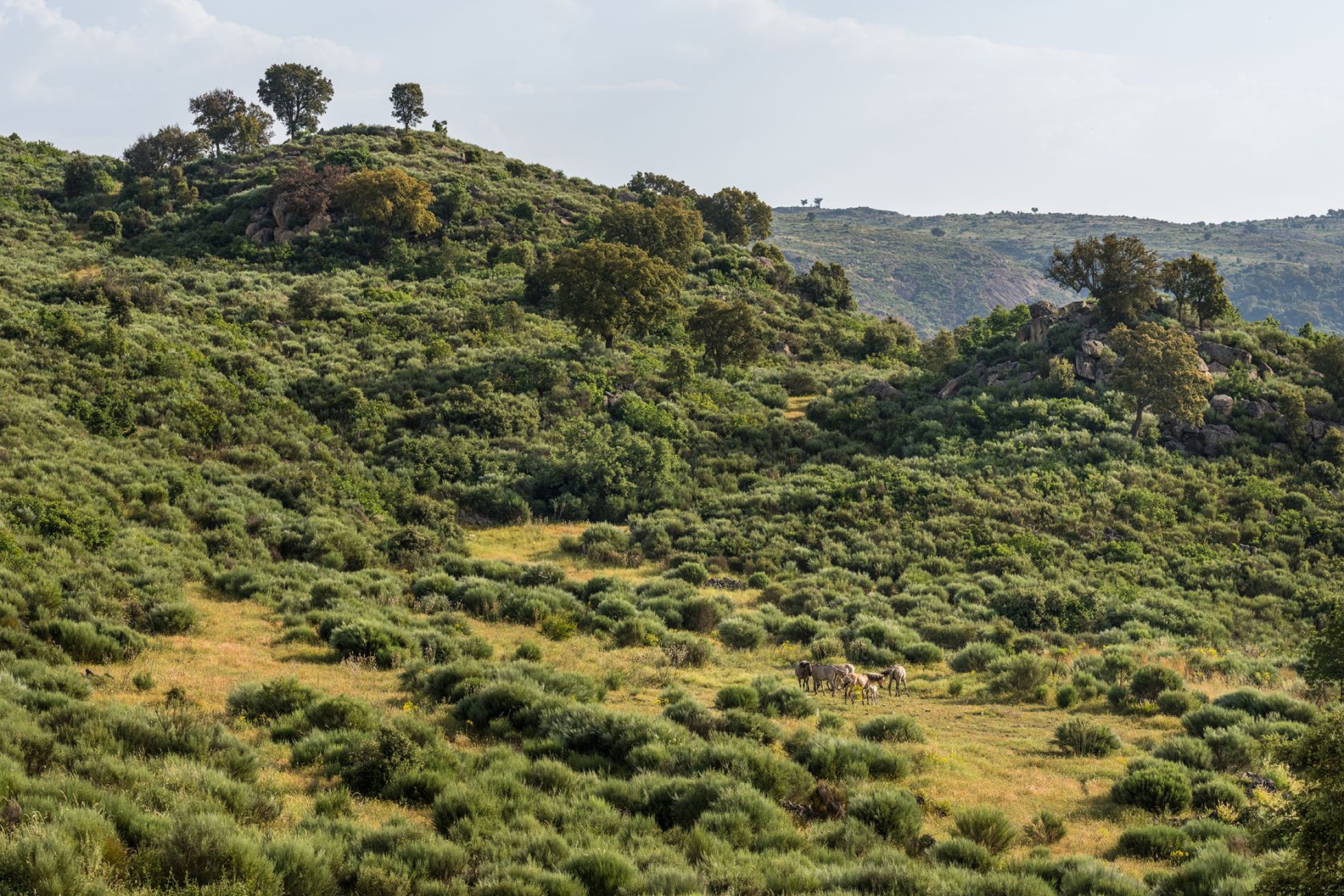The study also highlighted the fact that when groups of different herbivores graze in the same landscapes, this can be even more effective in reducing fire risk.
Since its founding in 2011, Rewilding Europe has reintroduced and reinforced populations of semi-wild horses in many of its landscapes – from Przewalski’s horses in Spain, to the Konik and Karakachan horses in the Rhodope Mountains of Bulgaria and even the Sorraia horse in the Greater Côa Valley.
Through their natural grazing and other interactions with landscapes and their wildlife, wild and semi-wild horses play a vital ecological role, which is why it is so important to restore populations across Europe.
Horses in this regime help to create a mosaic of diverse and nature-rich habitats, breaking up grasslands and creating grazing areas, also contributing to the spread of plant species and acting as natural fertilisers. In addition, large herbivores such as horses can provide socio-economic benefits. By consuming flammable vegetation, they can reduce the amount of fuel available for catastrophic wildfires, while the presence of iconic horse breeds in landscapes can drive the growth of nature-based tourism, as Sorraia horses are doing in the Greater Côa Valley in our rewilding areas.

Horse grazing assessment
The beneficial impact of natural grazing by semi-feral horses has been confirmed by new research conducted in the Greater Côa Valley landscape in Portugal, with the results presented in a new paper published in the journal Frontiers in Ecology & Evolution.
Researchers explored the impact of transitioning from traditional extensive cattle grazing to semi-wild horse grazing in two rewilding areas – Vale Carapito and Ermo das Águias – over a three-year period. Both are now exclusively grazed by Sorraia horses – an indigenous Portuguese breed adapted to living in wild or semi-wild conditions – which were reintroduced by the Rewilding Portugal team. Plots in both sites were fenced and used as no-grazing control sites.
Managing fire risk
The results of the study showed that horse grazing in the two rewilding areas reduced the risk of catastrophic wildfire outbreaks by reducing the height and quantity of vegetation. This impact is particularly relevant for rural landscapes in the Mediterranean region, where wildfires – which can be devastating to people, property and wildlife – are now increasingly common. The two underlying factors behind this trend are more extreme temperatures resulting from climate change and the decline in agriculture and livestock grazing, which is leading to unregulated growth of grasses and shrubs. The study also showed that while horses in rewilded areas helped control grasses through their grazing, they had little impact on woody vegetation, which is also easily combustible. From a management perspective, the study’s co-authors suggest that a combination of different herbivores – such as horses, deer, European bison or extensively grazed cattle – may be even more effective in reducing fire risk in Mediterranean landscapes, because different species graze on different types of vegetation, promoting greater ecosystem function and resilience. This aligns with the rewilding approach to boosting natural grazing, which aims to bring back different types of wild and semi-wild herbivores to the same landscapes to amplify their positive impact.

The benefits of reintroducing herbivores such as semi-feral horses are not limited to reducing fire risk. The Greater Côa Valley study also showed that grazing by Sorraia horses increased the proportion of flowering plants in the landscape, which in turn can increase the amount of food available for pollinating insects such as bees and butterflies.
Natural grazing by horses also increased the amount of organic matter in the soil – which is key to increasing soil biodiversity – and supported the growth of different native tree species. This second impact is particularly important in places where wilderness is recovering from intense and recurrent fires, as is the case in Ermo das Águias.
Rewilding Europe has published an updated report on horses used in rewilding in 2023. A reference guide for the reintroduction of wild horses into European landscapes, the publication is aimed at all rewilding initiatives that already work with wild horses or are considering working with them.
Related article:















An even better idea would be to not plant eucalyptus everywhere around where I live and then do fire prevention by strimming all the beautiful wildflowers by the side of the road. Even when fields are strimmed the cut grass is left to get inder dry and create much more of a fire-risk. The real problem of eucaluptus and when they are cut all the small pieces left of the ground is never tackled.
By Martin Jelfs from Porto on 30 Jun 2025, 16:01